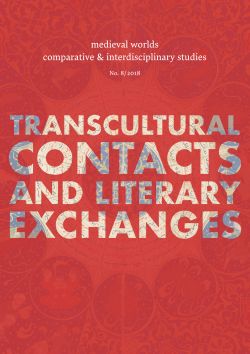 |
 |
Walter POHL – Andre GINGRICH (Eds.)
medieval worlds • no. 8 • 2018
Transcultural Contacts and Literary Exchanges
Christian Høgel
S. 3 - 21 doi: 10.1553/medievalworlds_no8_2018s3
Verlag der Österreichischen Akademie der Wissenschaften doi: 10.1553/medievalworlds_no8_2018s3
Abstract:
Various concepts guide discussions on global literature, not least ›transnational‹. The present text advocates, however, for the term trans-imperial, as offering a more correct definition of world literature, or global literature, both in pre-modern and modern times. Imperial spheres build up worlds of strong interconnections, and the languages they employ become privileged languages that may last beyond the time span of a given empire. These imperial spheres with their one central language therefore form the hardest borders for the dissemination of texts, now and then. By being trans-imperial, texts therefore constitute the true global literature. In medieval times trans-imperial texts would comprise especially fable stories, holy texts, philosophy and science, and mirrors of princes. These were the texts most often carried from one imperial sphere, or rather imperial language, to another, through translations. This article, consequently, offers definitions of what constitutes an imperial language. Central to identifying and safeguarding a language and making it perform as an imperial language was the establishment of a grammar and/or a set of canonized texts defining the language, the actual use of it by an empire in running its administration, and the performance of the empire’s self-images through it. In many cases, secondary imperial languages – like Greek in the Roman world or Persian in the Caliphate – would hold a lower but still privileged place in the empire’s life and communication. Many such secondary imperial languages could then subsequently rise to the status of imperial languages, as several vernacular languages later did from Latin. The text argues that these features, which are probably most clear-cut in a pre-modern context, also hold true in a modern context, and that what we normally refer to as successful national languages (English, French, Spanish, Russian, etc.) were, from early on, imperial rather than national languages, and that their literature, in being global, was trans-imperial.
world literature, global literature, empires, nation states, transnational, trans-imperial Published Online:
2018/11/30 09:30:35 Object Identifier:
0xc1aa5576 0x003a16ec
Rights:All rights reserved.For questions regarding copyright and copies please contact us by email.
medieval worlds provides a forum for comparative, interdisciplinary and transcultural studies of the Middle Ages. Its aim is to overcome disciplinary boundaries, regional limits and national research traditions in Medieval Studies, to open up new spaces for discussion, and to help developing global perspectives. We focus on the period from c. 400 to 1500 CE but do not stick to rigid periodization.
medieval worlds is open to submissions of broadly comparative studies and matters of global interest, whether in single articles, companion papers, smaller clusters, or special issues on a subject of global/comparative history. We particularly invite studies of wide-ranging connectivity or comparison between different world regions.
Apart from research articles, medieval worlds publishes ongoing debates and project and conference reports on comparative medieval research.
Editor’s Preface
Walter Pohl and Ingrid Hartl
World Literature is Trans-Imperial: A Medieval and a Modern Approach
Christian Høgel
The Global Eminent Life: Sixth-Century Collected Biographies from Gregory of Tours to Huijiao of Jiaxiang Temple
James T. Palmer
The Aristotle of Pippin III. Greek Books Sent to the Frankish Court (ca. 758 AD)
Christian Gastgeber
Biblical Elements and the ‘Other’ in the Chronicon regum Legionensium
Patrick S. Marschner
“The messenger is the place of a man’s judgment”: Diplomacy between Emperors and Caliphs in the Tenth Century
Courtney Luckhardt
The Geopolitics on the Silk Road: Resurveying the Relationship of the Western Türks with Byzantium through Their Diplomatic Communications
Li Qiang and Stefanos Kordosis
Project Reports
Dynamics in Buddhist Transfer in Eastern Central Asia 6th-14th Centuries: A Project Report
BuddhistRoad Team
Mobility, Empire and Cross-Cultural Contacts in Mongol Eurasia (MONGOL)
Michal Biran
Greek into Arabic. Philosophical Concepts and Linguistic Bridges
Cristina D’Ancona, Gerhard Endress and Andrea Bozzi
Writing the History of Aristotelian Logic During the Long Ninth Century. Some Remarks and Preliminary Results
Christophe Erismann
The THESIS Project
Monica Brinzei
Origins of the Vernacular Mode: Medieval Theology, Politics and Religious Identities
Pavlína Rychterová
|




 Home
Home Print
Print
 References
References
 Share
Share
